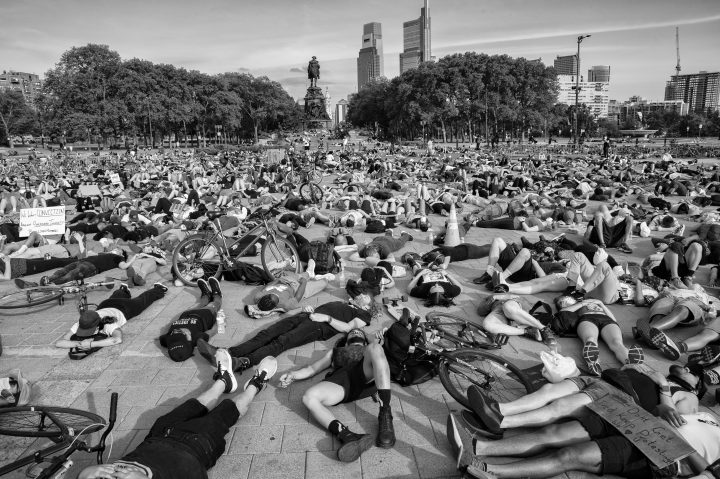
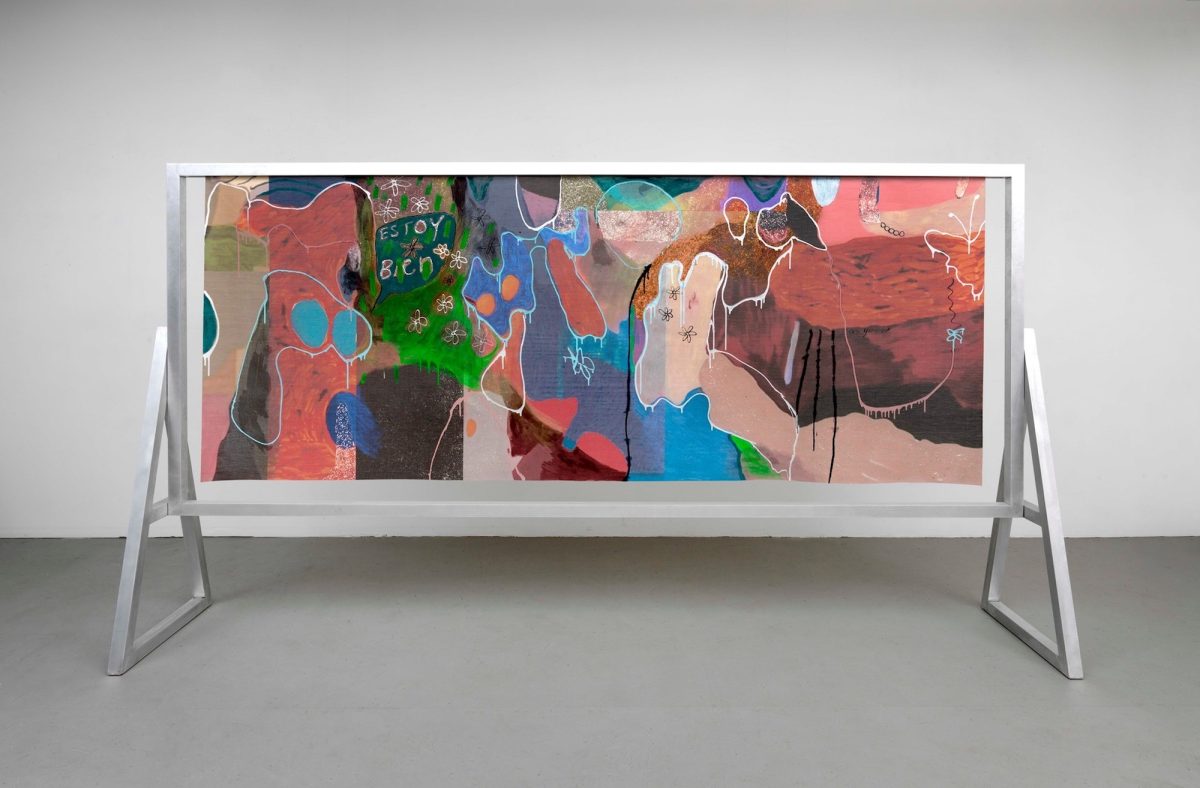
Visitors to museum exhibitions are often greeted by a long wall text, a daunting tract of historical context and theoretical jargon that — however necessary — can feel decidedly uninviting. At the entrance to Estamos Bien — La Trienal 20/21 at El Museo del Barrio in New York City, we are confronted not with a reading assignment but a photograph: Ada Trillo’s “Peaceful Protest” (2020), taken from the steps of the Philadelphia Museum of Art at the height of Black Lives Matter demonstrations last summer. The black-and-white panoramic image, depicting hundreds of supine bodies strewn across the pavement in a staged “die-in” against racist violence, speaks for itself.
Immediately captivating and visually gripping describes much of the art in this sprawling, at times overwhelming, showcase of 42 artists who identify as Latinx — a gender-neutral term for Latin American descendants living in the US or the Caribbean. That’s not to say that its organizers, El Museo curators Rodrigo Moura and Susanna V. Temkin and guest curator Elia Alba, have skimped on didactic material; the show features bilingual wall labels throughout its eight galleries. But many of the works on view would stand on their own, independent of the context and framework offered by El Museo. In their selections, the curators refrained from sacrificing form or quality to pander to notions of “Latinidad.” Instead, the works defy pervasive stereotypes of Latinx art as a niche category requiring special interest, scholarship, or institutional validation.

Expanding on El Museo’s biennial survey The S-Files (1999-2013), which featured Puerto Rican and Latinx artists from the New York area, La Trienal gathers artists who are local as well as those from Florida, California, Illinois, and beyond, illustrating the geographical reach of the largest so-called “minority” in the United States. All but one, painter Cándida Álvarez, had never before been exhibited at the museum; the show’s greatest contribution might be staking a claim for these diasporic creators.
Next to Trillo’s photograph is a stack of newspapers and an epitaph printed on a black wall, the elements of Lizania Cruz’s “Obituaries of the American Dream” (2020-21). The papers, which visitors are invited to take, are filled with individual anecdotes about the moments when the myth of equal opportunity in America “died” — personal stories Cruz collected as part of an eponymous online project commissioned by El Museo in advance of the triennial’s opening. Her haunting, minimalist installation lays to rest a romanticized ideology rooted in brutal expansionism.
Memory, particularly sensory recollections, emerge throughout the show as a balm for trauma and displacement. In “Dinner As I Remember” (2016), Francis Almendárez narrates a slideshow of food and family-themed images: onions simmering in a pan, loaded pupusas, candid photos of relatives at the dinner table. Almendárez’s voice, affectionately recalling the flavors of his Central American upbringing in LA, continues to echo as we admire Dionis Ortiz’s floor piece “Let There Be Light” (2020-2021). Painting inexpensive vinyl tiles to imitate luxury materials is a trade Ortiz learned from his father; the technique is used here in a thoughtful meditation on domesticity, labor, and tradition. (The museum’s label draws connections to early Cubist collage — a reference I don’t think is necessary — and Carl Andre, an artist I prefer to never think about.)
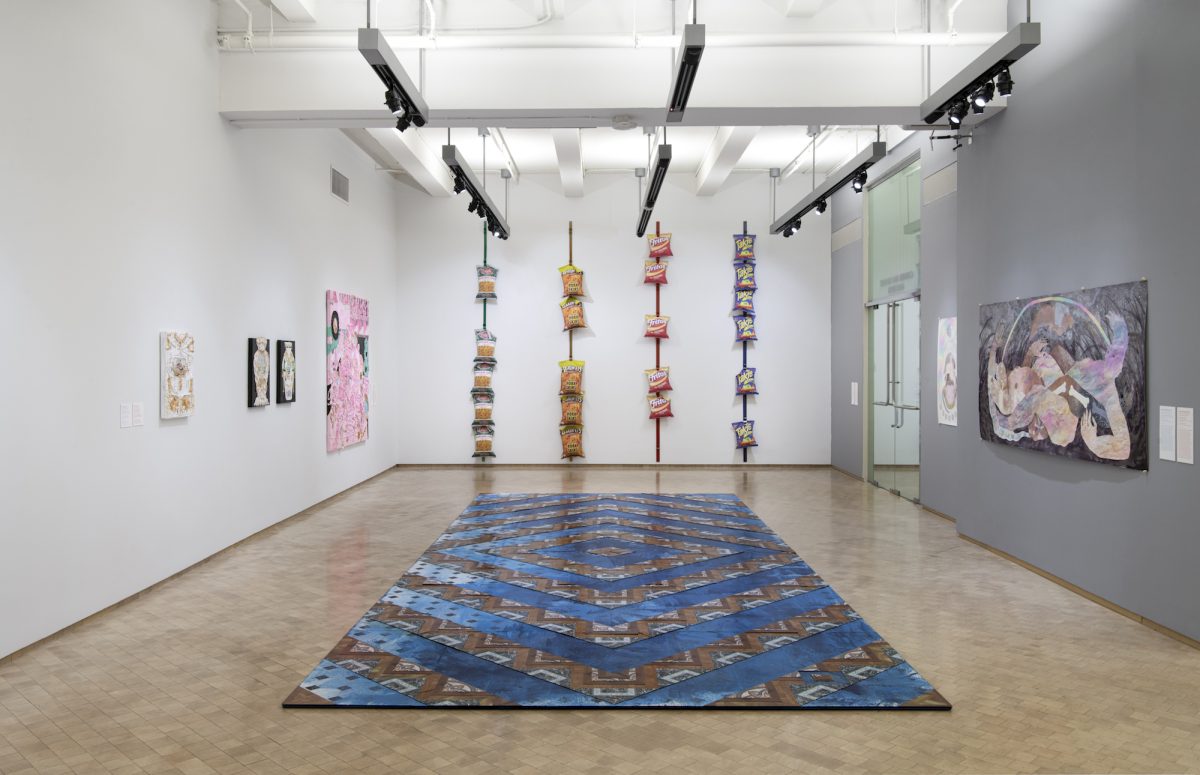
Many of the works in this triennial are concerned with commodity and materialism — challenging, dismantling, or laughing along with consumerist absurdity. In a trio of untitled oils, each measuring no more than eight by eight inches, Victoria Gitman renders with hyperbolic precision close-ups of sequined jackets from the 1980s, poking fun at value systems as well as the gendered history of painting. On the back wall, sculptures from Lucía Hierro’s “Racks” series (2019) — 12-foot-high snack display strips, complete with plushy versions of bags of Fritos, plantain chips, and chicharrones — transform bodega staples into cartoonish props, comedically exaggerating their ethnic import.
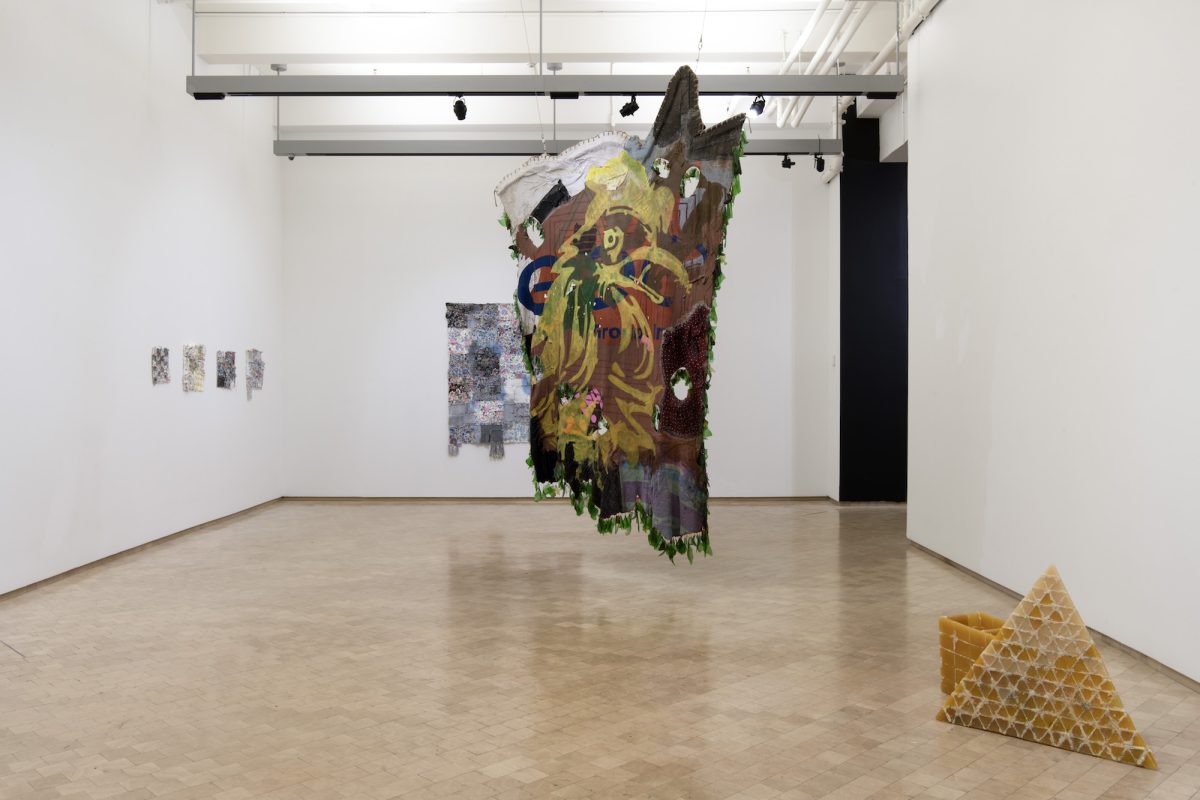
Humor gives way to solemn reflection with two tapestries by Eddie R. Aparicio, rubber castings of ficus trees from the artist’s Los Angeles neighborhood that have been embellished with paint, glass shards, and the plants’ own organic residue. One of them, a suspended piece titled “El Ruido Del Bosque Sin Hojas (The Sound of the Forest Without Leaves)” (2020), honors the forests in El Salvador destroyed by incendiary weaponry during the nation’s bloody US-backed civil war.
A sweet scent wafts from Yanira Collado’s enchanting geometric sculpture “Untitled” (2020), built of blocks of soap derived from the resin of the Cuaba tree. In Collado’s native Dominican Republic, the multi-purpose Cuaba soap is used for everything from feminine hygiene to spiritual cleansing counter-spells. Rituals come up again and again throughout this show; they’re a defiant form of resistance against hegemonic powers.

Other artists choose to tackle oppressive systems head-on. In a short video at the start of the third gallery, the research collective Torn Apart/Separados presents a visual database mapping detention centers and ICE facilities across the US. Not far is Vick Quezada’s “Table Remains” (2018), a grid of hand-pressed ceramic cafeteria trays that abstracts a mass-produced object found in prisons and other spaces of confinement through an intimately artisanal process.
In the fifth gallery, we finally encounter an introductory wall text for La Trienal, which also names the show’s financial supporters. Among them is the Jorge M. Pérez Family Foundation, founded by South Florida “condo king” Jorge Pérez, whose 2008 book includes a foreword by Donald Trump and who infamously told journalist Jeff Gooddell that by the time sea level rise becomes a problem in Miami, “I’ll be dead, so what does it matter?” Though Pérez has opposed Trump’s presidency and walked back his comments on climate change, the reminder that a real estate developer helped fund this show is sobering. A few steps away, artist Carolina Caycedo memorializes dozens of environmental activists murdered in recent years in a family tree-inspired wall drawing titled “Genealogy of Struggling” (2021).
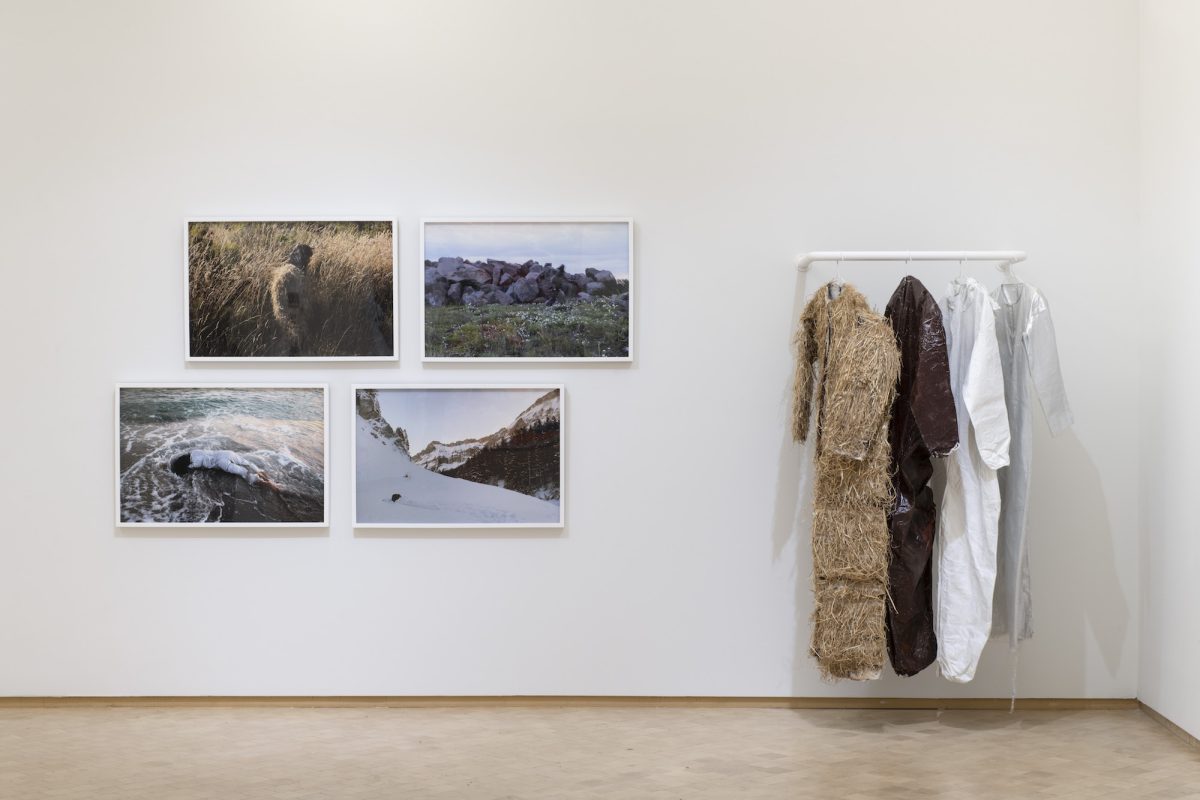
María Gaspar’s Disappearance Suits (2012–20), photographs of the artist in natural settings wearing costumes that camouflage with her surroundings, brings one of the most poetic moments in the exhibition. Draped on a nearby rack are the artist-designed garments themselves — a hay-covered onesie, for instance, that she wore to blend in amid California’s grassy Marin Headlands. The concept makes me think of Ana Mendieta’s earthworks, but instead of imprinting her body on the landscape, Gaspar makes herself invisible, evoking the chameleonic strategies Black and Brown Latinx women depend on for survival.
Two works in the final gallery deal more viscerally with the Latinx body. Earlier this year, Carlos Martiel stood naked on top of a pedestal at El Museo, his body ostensibly covered in blood drawn from historically marginalized people, including Black, trans, and Native American individuals. The dried copper-brown residue left behind by Martiel’s footprints is presented in a glass encasing accompanied by video documentation of the performance, titled “Monument I” (2021). Across the room, a group of massive paintings by Vincent Valdez, collectively titled “The Strangest Fruit” (2013) illustrates the horrific lynchings of Mexican Americans across the US Southwest in the 19th century.
These pieces compete for attention with Michael Menchaca’s “A Cage Without Borders” (2020-21), a dizzying yet engrossing three-channel animation whose cacophonous soundtrack — integral to its denouncement of big-tech surveillance techniques — nevertheless drowns out the reverent silence that Martiel and Valdez’s oeuvres merit.
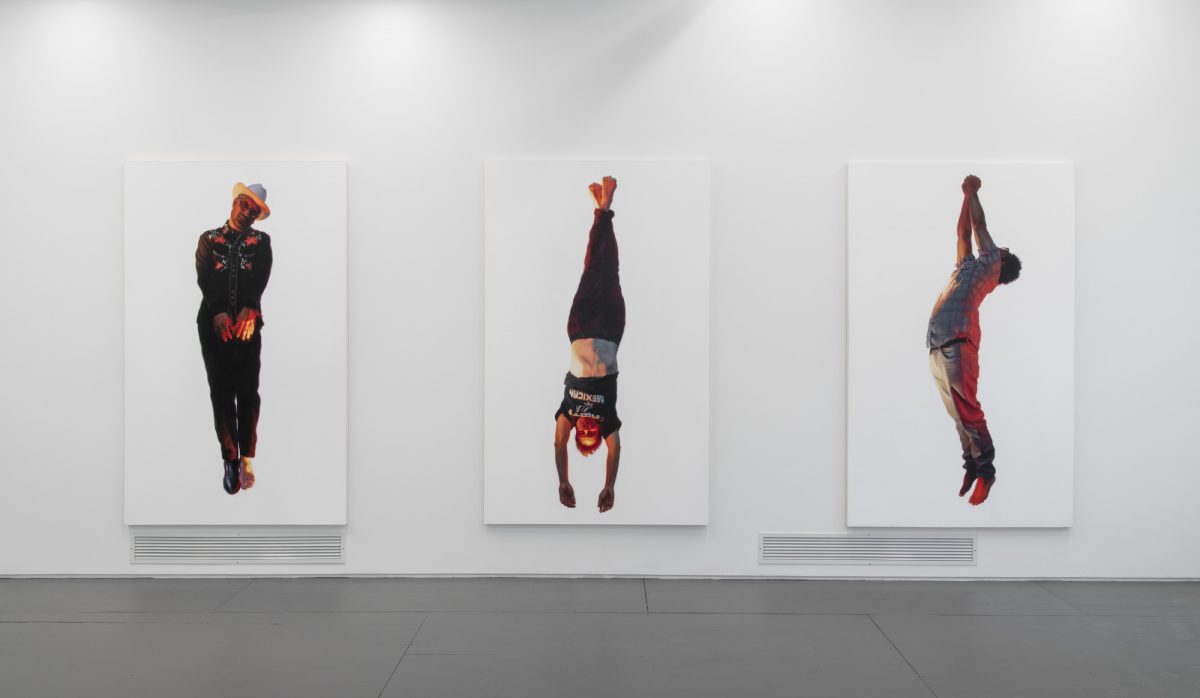
Confronting the absence and presence of the Latinx community is relevant to the museum’s recent history. Founded in 1969 at the height of the Nuyorican movement in New York, El Museo was born as an alternative space dedicated to Puerto Rican art and culture (“El Barrio” refers to its home neighborhood of East Harlem, where nearly half of the population is Hispanic.) Its focus has since expanded to encompass Latinx art at large, but also what some critics decry as market-friendly work by established artists based in Latin America.
In the spring of 2019, hundreds of artists and cultural workers signed the “Mirror Manifesto,” an open letter demanding more Latinx representation among the museum’s curatorial staff. The museum had just brought on Moura, a Brazilian curator; his appointment and that of director Patrick Charpenel, who came to El Museo from the corporate collection-turned-museum Jumex in Mexico City, were viewed as examples of “hiring Pan-Latinos … whose vision is to replicate a European blueprint of an art institution.” That June, on the day of El Museo’s 50th anniversary, activists took to the museum’s galleries to perform readings of the text.
Is Estamos Bien — La Trienal 20/21 a step toward healing these grievances? It’s worth noting that Moura and Temkin were joined by the Queens-based, Brooklyn-born artist Alba, in curating the exhibition. I suspect the differences in their backgrounds and lived experiences were pivotal to finding artists who embody such diverse aspects of the ever-shifting Latinx reality.
The triennial’s title, Spanish for “we’re fine,” references Cándida Álvarez’s painting in the show “Estoy Bien” (2017), made in the aftermath of Hurricane Maria. The cheeky phrase carries equal parts bitterness and hope in the face of adversity — a fitting expression of El Museo’s complicated past and this show’s promise, perhaps, of a more inclusive future.
Estamos Bien — La Trienal 20/21 continues at El Museo del Barrio (1230 Fifth Avenue at 104th Street, Manhattan) through September 26. The exhibition was curated by Rodrigo Moura, Susanna V. Temkin, and Elia Alba.
0 Commentaires